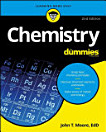New Trends in CO Activation
L. Guczi
জুন ১৯৯১ · Studies in Surface Science and Catalysis কিতাপ 64 · Elsevier
ইবুক
489
পৃষ্ঠা
family_home
যোগ্য
info
reportমূল্যাংকন আৰু পৰ্যালোচনা সত্যাপন কৰা হোৱা নাই অধিক জানক
এই ইবুকখনৰ বিষয়ে
The aim of this volume is to provide scientists with a comprehensive summary of new research areas in the activation of carbon monoxide, as one of the most reactive molecules, and in its applications. In order to understand the variety of the reactivity of CO, a quantum-chemical approach helps the reader to understand the binding state of CO to the solid surface (Chapter 1). The structure of the adsorbed CO can be better understood by examining its reactivity towards single crystals in the absence and in the presence of promoters (Chapter 2). The first approach in the reactivity study is that of studying catalytic activity of single crystals and structure sensitivity which are summarized in Chapter 3. One of the most prominent effects in the CO activation process is ascribed to the presence of additives, promoters which, in a real catalyst system, are far more complicated than on single crystal surfaces (Chapter 4). The original Fischer-Tropsch process applied fused iron or cobalt catalysts which were suitable for producing mainly straight chain hydrocarbons. The two most important processes involving CO activation, the new FT process and alcohol formation are discussed in Chapters 5 and 7. An important type of catalyst, the bimetallic catalysts, is discussed in Chapter 6. The role of hydrogen as one of the most frequently used partners in CO activation is discussed in Chapter 8. The field of production of specialty chemicals is an excellent example of the homogeneous catalytic activation of CO (Chapter 9). In Chapter 10 an overview is given of the industrial applications of CO chemistry and these are illustrated by working processes. The final chapter gives the reader some hints about future progress in the field.
এই ইবুকখনক মূল্যাংকন কৰক
আমাক আপোনাৰ মতামত জনাওক।
পঢ়াৰ নির্দেশাৱলী
স্মাৰ্টফ’ন আৰু টেবলেট
Android আৰু iPad/iPhoneৰ বাবে Google Play Books এপটো ইনষ্টল কৰক। ই স্বয়ংক্রিয়ভাৱে আপোনাৰ একাউণ্টৰ সৈতে ছিংক হয় আৰু আপুনি য'তে নাথাকক ত'তেই কোনো অডিঅ'বুক অনলাইন বা অফলাইনত শুনিবলৈ সুবিধা দিয়ে।
লেপটপ আৰু কম্পিউটাৰ
আপুনি কম্পিউটাৰৰ ৱেব ব্রাউজাৰ ব্যৱহাৰ কৰি Google Playত কিনা অডিঅ'বুকসমূহ শুনিব পাৰে।
ই-ৰীডাৰ আৰু অন্য ডিভাইচ
Kobo eReadersৰ দৰে ই-চিয়াঁহীৰ ডিভাইচসমূহত পঢ়িবলৈ, আপুনি এটা ফাইল ডাউনল’ড কৰি সেইটো আপোনাৰ ডিভাইচলৈ স্থানান্তৰণ কৰিব লাগিব। সমৰ্থিত ই-ৰিডাৰলৈ ফাইলটো কেনেকৈ স্থানান্তৰ কৰিব জানিবলৈ সহায় কেন্দ্ৰত থকা সবিশেষ নিৰ্দেশাৱলী চাওক।







